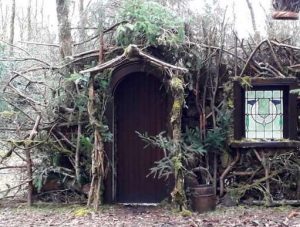I recently finished a project that I have been working on for quite a while: I built a greenhouse. I want it to last a long time, so I opted for my own design instead of relying on one of the countless “build a greenhouse in a day” YouTube videos that are so common.
I built a gravel pad foundation so that I can water my plants without worrying about where the water will drain. I framed the walls like I would a house, placing two-by-fours at 16-inch intervals and using diagonal bracing to strengthen the walls.
I added windows on both the east- and west-facing walls so that I could ensure good airflow in the summer and I put a 12-inch run on the roof so that water and snow will fall off easily during inclement weather.
I admit that when it was finished, I felt more than a little satisfied with myself. It was solidly built with plenty of room for future crops and seedlings. I thought that I’d thought of everything.
Then we had our first major windstorm.
A greenhouse works by allowing sunlight to enter through the walls, accumulating radiant energy that serves to keep the temperature in the greenhouse 10–20 degrees higher than the average outdoor temperature.
Naturally, this requires that the walls be made of a material that allows light to pass through easily. For my greenhouse I chose to wrap the sides in 10-mil plastic—stapling it to the wooden frame to hold it in place.
Sadly, the staples were not strong enough to hold the plastic onto the frame in the face of the 80-kilometer-per-hour wind gusts that we experienced that day, and when I went to check on the greenhouse, I noticed that the plastic was starting to come off the roof!
So I had to grab a ladder and some tools to quickly reattach it before the roof came off completely. I ended up lining the entire outline of the roof with scrap two-by-fours that I had in the barn, and nailing the plastic down underneath the wood.
The reason the plastic had started to come off of the roof was because the staples have a small surface area.
They held the plastic to the greenhouse frame without issue in good weather. But in a storm, when the plastic is shifting and flapping around, the small surface area of the staples causes the plastic to tear.
But the two-by-fours have a much larger surface area, and they do a better job of keeping the plastic from shifting in the wind, which stops it from tearing off the greenhouse frame.
Honestly, I felt exhilarated in the moment; climbing a ladder in the face of high winds so that I could do battle with the elements. However, in the days that came after, I felt a bit annoyed with myself: “Of course the staples wouldn’t be enough to hold the plastic down,” I thought to myself. “I should have seen this coming.”
And then I started to think about all of the other things that “I should have seen coming” when I started this homestead. An abbreviated list:
1. I should have known that cabbage moths would attack my lettuce and cabbage plants
2. I should have known that Japanese beetles would try and eat my corn plants
3. I should have known that chickens stop laying eggs in the winter
As I went down the list of things that I “should have known” prior to learning them, I realized that if I had really tried to learn everything that there is to know about building, growing food, and caring for animals prior to starting on this project, I would never have been able to start.
The only thing I can do is to try my best, learn as much as I can, and be ready to adapt when the proverbial windstorm tries to ruin my best laid plans.
In Buddhism, we are warned that greed is a cause of suffering. Normally this is understood as greed for wealth and status. But we can also be greedy for knowledge. We can have the incorrect expectation that we must know everything and not make mistakes.
But if we live our lives this way, we’ll suffer from “analysis paralysis,” unable to do or try new things because of our fear of failure. This results in our minds being filled with fear and anxiety as we fail to do things “exactly right.”
And that’s the opposite of what the Buddha wanted for us. On the other hand, if we’re able to smile and accept that mistakes are a natural, inescapable part of our journey, we can work creatively to find solutions and enjoy the process of learning through our daily activities.
And the more we learn, the better we become at ending suffering for ourselves and others.
Namu Amida Butsu
See more
Four Steps to Help You Accept the Death of Old Ideas
A Future We Can Love: Susan Bauer-Wu Offers a Buddhist Perspective on the Climate Crisis
Are You a Knowledge-Holder?
Starting the Lawn Mower
My Grandmother’s Greenhouse and Other Portals to Wonder













